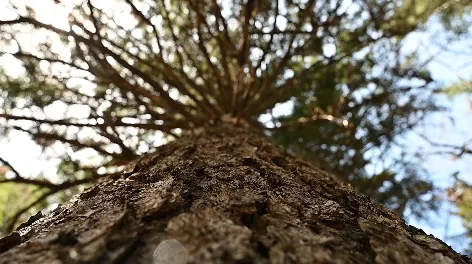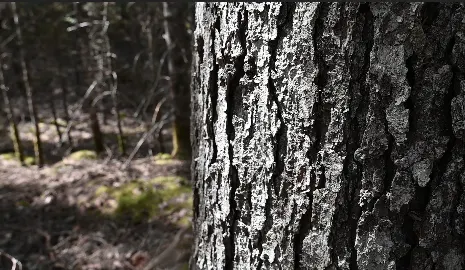
Unique forest in Canadian Maritimes is thinning as temperatures warm
A rapidly warming climate means that the Wabanaki-Acadian forest is at risk of losing much of its rich biodiversity.
Extending across the entire Maritimes and into the New England states of America, the Wabanaki forest’s unique tree composition blends two different forest types in one small geographic area.
Megan De Graff works to protect the Wabanaki-Acadian forest and sat down with The Weather Network (TWN) to explain why it’s so important to do so.
"It is a combination of cold tolerant boreal forest species that are found typically in the rest of Canada in the boreal forest, and then also mixed with some of those more southerly affiliated trees that we don't see except for in the southern states. And this is the one part of the world where those two forest types come together," De Graff told TWN.

Community forests International aims to protect trees like the one pictured here, located in the Wabanaki-Acadian forest in Sackville, N.B. (Nathan Coleman)
Yet, De Graaf says the advent of industrial forestry simplified the forest, changing it from old, mixed, and diverse to being dominated by a few common conifer species prized for timber and wood products — precisely the ones least likely to do well as the climate continues to change.
"As the temperatures increase, that means that those cold adapted boreal species become less and less capable of surviving in the region," said De Graff.
"There's only about one or two per cent of the forest that still exists in an old diverse state like it once was. The more simplified your forest is, the less diverse it is, the less likely it is to resist or be resilient to the effects of climate change."

The red spruce is one species of tree that you don't find outside of the Wabanaki-Acadian forest region near Sackville, N.B. (Nathan Coleman)
Community Forests International has launched a fundraising campaign called Forgotten Forests to protect and restore 2,500 acres of forest across the Maritimes and has secured 80 per cent of the funds to purchase them, but they’re hoping to raise the remaining $250,000 before the end of July.
Watch the video above for more details on the pioneering work to conserve the Wabanaki-Acadian forest.
Thumbnail image: In precolonial times, forest stands like this one in Sackville, N.B., were diverse and contained many different species. The region is characterized by having 32 different native tree species. (Nathan Coleman)

